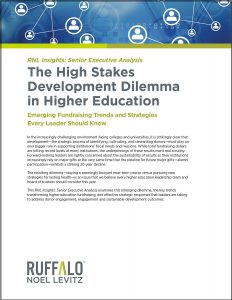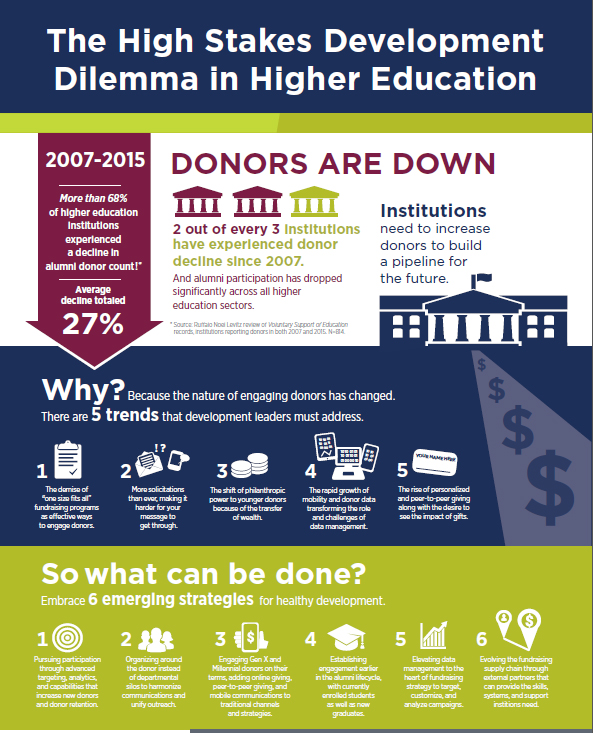fundraising
Addressing 5 key fundraising trends in an era of more alumni and fewer donors
At the start of this year, the Ruffalo Noel Levitz team confronted two truths:
- Higher education received a record $40.3 billion in charitable support in 2015.
- Alumni participation in giving has declined massively for over two decades, and over two thirds of institutions showed a decline in alumni donors from 2007 to 2015.
The first truth is certainly worth celebrating, but when we realized that most of these massive contributions have come to institutions that already have a great amount of resources, and that three quarters of major givers have given annually before they give big, the dilemma of donor decline means that the future looks quite uncertain. At a time when we have more alumni than ever, we also have fewer donors.
At a time when we have more alumni than ever, we also have fewer donors.
Over 400 professionals attended two webinars we held on this topic earlier this year, and we know it’s a hot topic. We’ve seen great passion by fundraisers to turn their donor numbers around, both for immediate return on investment and building their major and planned gift pools. We wanted to rack our collective brains, address the donor decline issue, and answer the question: “Why is this happening, and what can we do about it?”—before it’s too late.
Tackling emerging fundraising trends in a new analysis

We have done that in our new executive analysis, The High Stakes Development Dilemma in Higher Education. The paper outlines five key fundraising trends that are behind donor decline:
- The demise of “one size fits all” fundraising programs
- An explosion in solicitations crowding out appeals
- The shift of philanthropic power to younger donors
- The rapid growth of mobility and donor data
- The rise of personalized and peer-to-peer giving
The hard truth is that many other charities and the commercial world are addressing these fundraising trends better than higher education. We offer solutions that we all need to consider to get back on course.
In the paper, we also propose six strategies that are working right now for our campus partners and other institutions. These include working as one organization to engage donors, expanding strategies to increase donor participation, engaging Millennials on their own terms, and using data strategically to target donors and make communications more personalized. There’s not enough space to list all the solutions here, but I’ll tell you that we’re not being shy in offering suggestions.
There was plenty of discussion here at RNL about what exactly to put in this paper, and over the next few months, you’ll see us unpacking the implications and proposed solutions here at RuffaloNL.com and in webinars, case studies, and additional papers. We’ll be providing examples of institutions that are doing it right.
Check out the paper today, and let us know what you think. The clock is ticking to bring more loyal donors to higher education into our donor pools. We need to think carefully about how to do this, or one day we will wake up and have very few prospects to approach for even bigger giving.
Download the infographic on the fundraising trends discussed in the paper
